Fellow of The Electrochemical Society was established in 1989 for advanced individual technological contributions in the fields of electrochemistry and solid state science and technology and service to the Society. These members are being recognized at the plenary session for scientific achievements, for leadership, and for active participation in the affairs of ECS. Each year, up to 15 renowned scientists and engineers are chosen by their peers for this honor. Join us in celebrating the 2018 class of the Fellows of the Electrochemical Society.
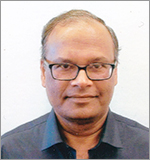 Sheikh A. Akbar is a Professor of Materials Science and Engineering and Founder of the National Science Foundation Center for Industrial Sensors and Measurements at The Ohio State University in Columbus, OH.
Sheikh A. Akbar is a Professor of Materials Science and Engineering and Founder of the National Science Foundation Center for Industrial Sensors and Measurements at The Ohio State University in Columbus, OH.
His research deals with synthesis-microstructure-property relations of ceramic bulk, thin-film and nanostructures for electrochemical devices such as sensors and biomedical applications. Akbar was the chair of the 12th International Conference on Chemical Sensors held in 2008. His sensors received three R&D 100 Awards as part of the 100 best inventions of 2007 and 2005 as selected by R&D Magazine, and 2005 NASA TGIR (turning Goal into Reality) award.
Akbar is the recipient of the 2012 The Electrochemical Society Sensor Division Outstanding Achievement Award, the 2002 Tan Chin Tuan Fellow of Nanyang Technologi-cal University in Singapore, and the 2001 Fulrath Award and the 2002 W.E. Cramer Award of the American Ceramic Society.
He was elected a Fellow of the American Ceramic Society in 2001. He also received the 1993 B.F. Goodrich Collegiate Inventors Award for the development of a rugged and durable CO/H2 sensor; one of three national awards. Akbar is on the editorial boards of the Journal of Nanoengineering and Nanomanufacturing, Materials Focus, Sensors, Ceramics International, Journal of Nanomaterials, and Sensor Letters and Frontiers in Materials.
He has published more than 220 technical papers and holds eight patents. Akbar received the Mars G Fontana Outstanding Teacher Award in Materials Science and Engi-neering at OSU for both 2016 and 2017.
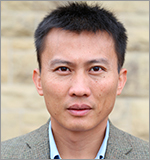 Yi Cui is a Professor in the Department of Materials Science and Engineering at Stanford University.
Yi Cui is a Professor in the Department of Materials Science and Engineering at Stanford University.
He received BS in Chemistry in 1998 from the University of Science and Technology of China (USTC) and his PhD in 2002 from Harvard University. After that, he went on to work as a Miller Postdoctoral Fellow at University of California, Berkeley.
In 2005 he became an assistant professor in the Department of Materials Science and Engineering at Stanford University. He was promoted with tenure in 2010 and became a full professor in 2016. His current research is on nanomaterials for energy storage, photovotalics, topological insulators, biology and environment.
He has founded three companies to commercialize technologies from his group: Amprius Inc., 4C Air Inc. and EEnovate Technology Inc. He is a Fellow of Materials Research Society and a Fellow of Royal Society of Chemistry. He is an associate editor of Nano Letters. He is a co-director of the Bay Area Photovoltaics Consortium and a co-director of Battery 500 Consortium.
He is a highly proliferate materials scientist and has published ~390 research papers with an H-index of 162 (Google). In 2014, he was ranked No. 1 in materials science by Thomson Reuters as “The World’s Most Influential Scientific Minds.” His selected awards include: Blavatnik National Laureate (2017), MRS Kavli Distinguished Lectureship in Nanoscience (2015), the Sloan Research Fellowship (2010), KAUST Investigator Award (2008), ONR Young Investigator Award (2008), and the Technology Review World Top Young Innovator Award (2004).
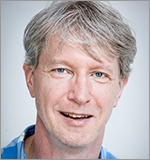 Jan Fransaer is a professor of Materials Engineering at the KU Leuven. He received his engineering degree in metallurgy from the UGent in 1985, and his PhD in materials engineering from KU Leuven in 1994.
Jan Fransaer is a professor of Materials Engineering at the KU Leuven. He received his engineering degree in metallurgy from the UGent in 1985, and his PhD in materials engineering from KU Leuven in 1994.
He received the NSF Graduate Student Award in 1994 for his work on developing models and sensors for suspension plating. He was a Postdoctoral Research Fellow at Harvard University where he studied the nucleation of metals during solidification with Frans Spaepen’s group.
At the age of 7, his older brother steered him towards electrochemistry by electrolyzing water using a 4.5 V battery, car acid and two carbon electrodes from spent alkaline batteries. Since then, his group has made significant contributions to the practical and theoretical understanding of the electrodeposition of particles together with metals, and was one of the first groups to study this process using non-aqueous electrolytes. This resulted a few years later in the study of ionic liquids for electrochemical applications, mainly focused on electrodeposition, but now extended to batteries, fuel cells and supercapacitors.
Together with Koen Binnemans, he has explored the properties of a class of ionic liquids, called liquid metal salts, which are metal salts that are liquid below 100 °C. With his wife, Dominguez-Benetton, Fransaer is exploring the electrochemical synthesis of nanoparticles.
His current research focuses on experimental and computational electrochemistry, the electrochemistry of metal ions in ionic liquids and the electrodeposition of metals, alloys, semiconductors and MOFs. He has published over 200 papers in this area and has filed 14 patents, of which four have been licensed to industry.
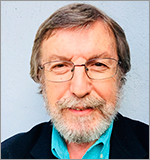 Turgut M. Gür is a retired adjunct professor of Materials Science and Engineering at Stanford University.
Turgut M. Gür is a retired adjunct professor of Materials Science and Engineering at Stanford University.
He spent nearly four decades in research, education and mentoring, as well as in providing leadership for major research centers on advanced materials and energy, including the NSF-MRSEC Center for Materials Research, Geballe Laboratory for Advanced Materials, and the DOE-EFRC Center on Nanostructuring for Efficient Energy Conversion. He also holds a visiting professor appointment from the Chinese University of Mining and Technology-Beijing in China.
Gür is the former chair of the ECS High Temperature Materials Division and served on several ECS committees as well as on the board of directors. He was a board member of the International Society for Solid State Ionics for ten years.
His primary research interest is high temperature electrochemical energy conversion and storage materials and technologies. He is recognized for his contributions in the development of carbon fuel cells for clean power generation; hydrogen and electricity co-production; high temperature electrocatalysis of NOx reduction, CO2-to-fuels conversion, and Fischer-Tropsch electrosynthesis; surface and interface engineered thin film SOFCs; and solid state ionic tools for fundamental research on functionally active oxides.
Gür has BS and MS degrees in chemical engineering from the Middle East Technical University in Ankara (Turkey), and a PhD in materials science and engineering from Stanford University. He holds 11 U.S. patents, and has authored or co-authored more than 150 technical publications related in large part to high temperature electrochemical energy sciences and materials.
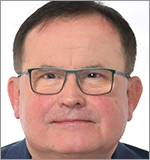 Pawel J. Kulesza received his PhD from Southern Illinois University at Carbondale and DSc from University of Warsaw, Poland.
Pawel J. Kulesza received his PhD from Southern Illinois University at Carbondale and DSc from University of Warsaw, Poland.
After postdoctoral appointments at University of Illinois at Urbana-Champaign, University of Texas at Austin, Fritz-Haber-Institut of Max-Planck-Gesselshaft in Berlin, EPFL – Swiss Federal University of Technology in Lausanne and University of North Carolina at Chapel Hill, he took a position of a professor of chemistry at University of Warsaw, Poland also held the position of dean there for many years.
In The Electrochemical Society, he served on many committees as well as chair of the Physical Analytical Electrochemistry Division and chair of the European Section. He is a member of Polish Academy of Sciences and, currently, a member of editorial boards of Electrocatalysis, Journal of Solid State Electrochemistry, Russian Journal of Electrochemistry and Electrochimica Acta (associate editor).
Kulesza has significantly contributed to description of mechanisms and dynamics of charge propagation in solid or semi-solid materials characterized by reversible redox transitions, fast charge propagation, and storage. His research has also led to the development of new electroanalytical methodology and advances in diagnostic measurements based on ultramicroelectrodes. He proposed new functional materials composed of networks of noble metal nanoparticles, carbon nanostructures, metal oxides, polyoxometallates, cyanometallates, or their hybrids with polymers.
More recently, his attention has centered on the development of hybrid materials for electrocatalysis (fuel cell fundamental research) and photoelectrochemistry (energy conversion, water splitting, CO2-conversion, and generation of fuels). He has published more than 250 refereed papers and has h-index of 55 (Google Scholar).
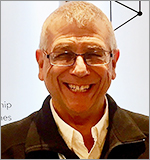 Stuart Licht is an environmentalist and electrochemist. He is a Dean’s Research Professor in the Department of Chemistry at George Washington University, and with his group has contributed over 400 papers and patents, focused on sustainability or fundamental, physical chemistry, and is the Leader of Team C2CNT, one of five finalist teams competing in the international Carbon XPrize to produce the most valuable product from the CO2 emissions of a gas power plant.
Stuart Licht is an environmentalist and electrochemist. He is a Dean’s Research Professor in the Department of Chemistry at George Washington University, and with his group has contributed over 400 papers and patents, focused on sustainability or fundamental, physical chemistry, and is the Leader of Team C2CNT, one of five finalist teams competing in the international Carbon XPrize to produce the most valuable product from the CO2 emissions of a gas power plant.
Stuart Licht served as a program director in the National Science Foundation. An early pioneer in the field of photoelectrochemistry, Licht helped establish basic principles of the field as well as highest efficiency photoelectrochemical solar cells (cover article, Nature, 1987). His principals of STEP (solar thermal electrochemical processes) have led to the demonstration of CO2-free syntheses of ammonia, iron & steel, cement, highest efficiency solar fuels, and organics. His research group has helped established the principals of multiple electron per molecule charge storage, including the 11 electron VB2, the hexavalent “super-iron,” and molten air batteries.
Licht has broadened the foundation of understanding of a wide range of electrochemical phenomena ranging from generation/collection microelectrochemistry, to fundamentals of speciation, and water purification, and recently introduced a process to remove the greenhouse gas CO2 to mitigate climate change by its transformation to carbon nanotubes.
Recognitions include Licht’s Hilldebrand Award, BASF 150th Anniversary Electrochemical Storage Award, the ECS Energy Technology Division Research Award, the Alcoa Research Award, GWU’s Trachtenberg Scholarship Award, the Technion Gustella Award, and Clark’s Carlson Endowed Chair in Chemistry.
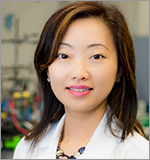 Y. Shirley Meng received her PhD in advance materials for micro and nano systems from the Singapore-MIT Alliance in 2005, after which she worked as a postdoc research fellow and became a research scientist at MIT.
Y. Shirley Meng received her PhD in advance materials for micro and nano systems from the Singapore-MIT Alliance in 2005, after which she worked as a postdoc research fellow and became a research scientist at MIT.
Meng currently holds the Zable Chair Professor in Energy Technologies and professor in Materials Science & NanoEngineering at University of California San Diego. She is the principal investigator of the research group – Laboratory for Energy Storage and Conversion. The LESC research focuses on the direct integration of experimental techniques with first principles computation modeling for developing new materials and architectures for electrochemical energy storage.
She is the founding director of Sustainable Power and Energy Center, consisting faculty members from interdisciplinary fields, who all focus on making breakthroughs in distributed energy generation, storage, and the accompanying integration-management systems.
She received several prestigious awards including American Chemical Society ACS Applied Materials & Interfaces Young Investigator Award (2018), International Coalition for Energy Storage and Innovation Inaugural Young Career Award (2018), IUMRS-Singapore Young Scientist Research Award (2017), C.W. Tobias Young Investigator Award of The Electrochemical Society (2016), BASF Volkswagen Electrochemistry Science Award (2015) and NSF CAREER Award (2011).
Meng sits on the executive board of the International Battery Association as one of the associate directors. She is the author and co-author of more than 160 peer-reviewed journal articles, one book chapter and four issued patents.
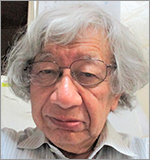 Junichiro Mizusaki has been active in the field of solid state ionics for nearly 50 years. Most of his works are on the properties of perovskite-type mixed conductors or on the gas-electrode kinetics of solid electrolyte cells.
Junichiro Mizusaki has been active in the field of solid state ionics for nearly 50 years. Most of his works are on the properties of perovskite-type mixed conductors or on the gas-electrode kinetics of solid electrolyte cells.
He also performed several characteristic researches on such topics as the extended DC polarization techniques to determine the electronic properties of silver halides, electrochemical degradation of ceramic electrodes, halide ion conduction of perovskite-type halides, electrochemical determination of copper and sulfur nonstoichiometry in copper-chevrel compounds, lithium ion conduction of lithium carbonate and its application to CO2 sensors, O– and F– emission from solid anion conductors, and application of acoustic emission analysis for the study of mechanical stability of solid oxide fuel cells.
He received his BS, Master’s, and PhD degrees from Faculty of Engineering, the University of Tokyo. He was a research associate there from 1975 until 1986. In 1977-1978, he was with Department of Materials Science and Engineering at the Massachusetts Institute of Technology.
In 1986, he moved to Yokohama National University as an associate professor. In 1994, he was became a professor at Tohoku University and led a laboratory in Research Institute of Scientific Measurements, later reorganized into the Institute of Multidisciplinary Research for Advanced Materials. He retired from Tohoku University in 2012 and received the title of a professor emeritus. He was a chairperson of the SOFC Society Japan (2004-2011) and of the Solid State Ionics Society of Japan (2006-2010). He also served as a councilor of International Society of Solid State Ionics (1997-2001).
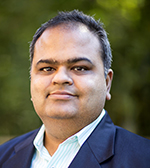 Venkat R. Subramanian received his Bachelor of Technology degree in chemical and electrochemical engineering from the Central Electrochemical Research Institute, Karaikudi, India, in 1997 and his PhD degree in chemical engineering from the University of South Carolina, Columbia, SC in 2001. He is currently a Washington Research Foundation Innovation Professor of Chemical Engineering & Clean Energy and an adjunct professor of Electrical Engineering, at the University of Washington, Seattle. He holds a joint appointment at Pacific Northwest National Laboratory as a Chief Scientist.
Venkat R. Subramanian received his Bachelor of Technology degree in chemical and electrochemical engineering from the Central Electrochemical Research Institute, Karaikudi, India, in 1997 and his PhD degree in chemical engineering from the University of South Carolina, Columbia, SC in 2001. He is currently a Washington Research Foundation Innovation Professor of Chemical Engineering & Clean Energy and an adjunct professor of Electrical Engineering, at the University of Washington, Seattle. He holds a joint appointment at Pacific Northwest National Laboratory as a Chief Scientist.
His research interests include multiscale simulation of electrochemical systems, electrochemical engineering, energy-systems engineering, real time state-of-charge and state-of-health estimation of lithium-ion batteries, model-based battery management systems for electric transportation, and renewable microgrids and application of nonlinear model predictive control methods.
Subramanian’s group has the fastest algorithm reported in the literature for the simulation of battery models.
Subramanian is a past elected chair of the IE&EE division of The Electrochemical Society, received the student research award from the ECS battery division and the ECS IE&EE division student achievement award for his doctoral research. He was awarded the Dean’s award for excellence in graduate study in 2001 for his doctoral research. He acknowledges the influence of his undergraduate and graduate advisors/teachers, his past and current students, and many researchers/well-wishers in the ECS community.
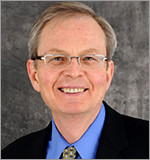 Jay Switzer is the Donald L. Castleman Distinguished Professor of Chemistry at Missouri University of Science and Technology. He also is a senior investigator at the Materials Research Center.
Jay Switzer is the Donald L. Castleman Distinguished Professor of Chemistry at Missouri University of Science and Technology. He also is a senior investigator at the Materials Research Center.
Switzer received his BS degree in chemistry from the University of Cincinnati, and his PhD degree in inorganic chemistry from Wayne State University under Professor John F. Endicott. After receiving his PhD degree, he joined Union Oil Company of California as a senior research chemist. His research at UNOCAL was on photoelectrochemistry and the electrochemical processing of photovoltaic cells.
In 1986, Switzer joined the Materials Science and Engineering Department of the University of Pittsburgh as an associate professor. In 1990, he moved to the University of Missouri, Rolla as a professor of chemistry. Switzer has spent most of his career working on the electrodeposition of nanostructured metal oxide semiconductors, magnetic materials, and catalysts.
He is best known for his work on the electrodeposition of epitaxial metal oxides, oxide superlattices, chiral surfaces, and freestanding single-crystal metal foils. Switzer received the ECS Electrodeposition Division Research Award in 2003, and he presently serves as the faculty advisor to the ECS Missouri S&T Student Chapter.
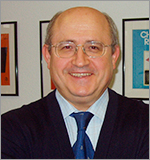 Tomás Torres is a full professor and director of the Institute of Advanced Research in Chemical Sciences, at Autonoma University of Madrid and associate senior scientist of the IMDEA-Nanoscience. His research has focused on the preparation of molecular materials based on phthalocyanines and on the study of their properties for applications in organic solar cells and photodynamic therapy. He has published more than 500 articles and reviews and 43 patents, has advised 50 doctoral theses, and has an H-Index of 77. He has been co-founder, and is a partner of NanoInnova Technologies.
Tomás Torres is a full professor and director of the Institute of Advanced Research in Chemical Sciences, at Autonoma University of Madrid and associate senior scientist of the IMDEA-Nanoscience. His research has focused on the preparation of molecular materials based on phthalocyanines and on the study of their properties for applications in organic solar cells and photodynamic therapy. He has published more than 500 articles and reviews and 43 patents, has advised 50 doctoral theses, and has an H-Index of 77. He has been co-founder, and is a partner of NanoInnova Technologies.
Torres belongs to the editorial board of Chemical Society Reviews (RSC, United Kingdom), and is a member of the International Advisory Board of Chemical Communications (RSC), among others.
In 2001 and 2017, he was distinguished as Visiting Fellow of the Japan Society for the Promotion of Science. In 2009, he was invested Doctor Honoris Causa by the Ivanovo State University, Russia, and 2016 by the Miguel Hernández University of Elche. In 2013 he was awarded the Research Prize and the Gold Medal of the Royal Spanish Society of Chemistry.
In 2016, he received the Linstead Career Award in Phthalocyanine Chemistry by the Society of Porphyrins and Phthalocyanines. In 2017, Torres was elected member of the European Academy of Sciences and received the “Miguel Catalán” Research Prize of the Community of Madrid. In 2018, he was awarded the Elhuyar-Goldschmidt Prize of the Gesellschaft Deutscher Chemiker of Germany.
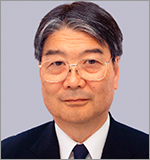 Hiroyuki Uchida is currently a professor and director of the Clean Energy Research Center at the University of Yamanashi.
Hiroyuki Uchida is currently a professor and director of the Clean Energy Research Center at the University of Yamanashi.
For the past 25 years, Uchida has devoted himself to the research and development of highly active, durable electrocatalysts for polymer electrolyte fuel cells and solid oxide fuel cells. He has co-authored more than 240 research papers.
In order to establish clear strategies for the design of electrocatalysts for PEFCs, Uchida has analyzed fuel cell reactions and degradation by use of a manifold of instrumental techniques. The use of monodisperse Pt or Pt-alloy nanocatalysts, with uniform composition and uniform dispersion over the surface of carbon supports by use of the original “nanocapsule” method, has contributed greatly to clarifying the effects of various properties (particle size, composition, and surface structure, etc.) on the activity and durability of the cathode and anode catalysts. He has demonstrated several important concepts for developing high-performance hydrogen and oxygen electrodes with high durability for a reversible solid oxide cell, operating as both SOFC and electrolysis cell.
Uchida has received the Award of the Electrochemical Society of Japan, Science and Technology Award of the Ministry of Education, Culture, Sports, Science and Technology of Japan, and the Scientific Achievement Award of the ECSJ. He has served as the editor-in-chief (2015–2018) of Electrochemistry (ECSJ), lead organizer of Electrocatalysts for PEFCs in the Fuel Cell Subcommittee of ECS, co-chair of the PRiME 2016 organizing committee, and vice-chair of Division 3 of the ISE (2012–present).
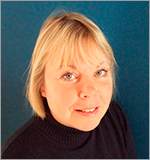 Sannakaisa Virtanen is professor for Surface Science and Corrosion at the Department of Materials Science of the Friedrich-Alexander University Erlangen-Nürnberg, Germany.
Sannakaisa Virtanen is professor for Surface Science and Corrosion at the Department of Materials Science of the Friedrich-Alexander University Erlangen-Nürnberg, Germany.
She studied metallurgy at the Helsinki University of Technology, Finland (MSc), and then joined the Swiss Federal Institute of Technology, ETH-Zurich, where she carried out her PhD research. After receiving her PhD, she was senior scientist at the ETH-Zürich, with research stays at the Brookhaven National Laboratory, USA and at the McMaster University, Canada.
In 1997, she was elected assistant professor at the ETH-Zürich, Department of Materials, and then joined FAU Erlangen as professor in 2003. In 2006 she was visiting professor at the Medical Faculty of the University of Helsinki, and in 2008 visiting professor at the Institute of Advanced Energy of the Kyoto University.
Virtanen is author of >200 peer-reviewed publications with an h-index of 36. She is the 2008 recipient of the H.H. Uhlig Award of the National Association of Corrosion Engineers. She was elected chair of the Gordon Research Conference on Aqueous Corrosion in 2016.
Virtanen’s research interests are on elucidation of reaction mechanisms at solid/liquid- and solid/gas-interfaces: passivity, oxidation, corrosion and degradation behavior of advanced metallic materials as well as their surface modification and functionalization. For this, advanced electrochemical and surface analytical tools are being employed. A strong focus of the research activities is on the corrosion behavior of metallic materials used in biomedical devices, including biodegradable metals.
As an active member of The Electrochemical Society, Virtanen is currently Chair of the Corrosion Division.
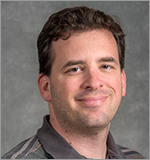 Adam Z. Weber holds BS and MS degrees from Tufts University, and a PhD from University of California, Berkeley in chemical engineering under the guidance of John Newman. His dissertation work focused on the fundamental investigation and mathematical modeling of water management in polymer-electrolyte fuel cells.
Adam Z. Weber holds BS and MS degrees from Tufts University, and a PhD from University of California, Berkeley in chemical engineering under the guidance of John Newman. His dissertation work focused on the fundamental investigation and mathematical modeling of water management in polymer-electrolyte fuel cells.
Weber continued his study of water and thermal management in polymer-electrolyte fuel cells at Lawrence Berkeley National Laboratory where he is now a staff scientist and program manager for Hydrogen and Fuel Cell Technologies and deputy director for both the Fuel-Cell Performance and Durability (FC-PAD) and HydroGEN consortia. His current research involves understanding and optimizing fuel-cell performance and lifetime using advanced modeling and diagnostics, understanding flow batteries for grid-scale energy storage, and analysis of solar-fuel generators, where he is a Thrust coordinator at the Joint Center for Artificial Photosynthesis.
Weber has coauthored over 110 peer-reviewed articles and 10 book chapters and has been invited to present his work at various international and national meetings. He is the recipient of a number of awards including a Fulbright scholarship to Australia, the 2008 Oronzio and Niccolò De Nora Foundation Prize on Applied Electrochemistry of the International Society of Electrochemistry, the 2012 ECS Supramaniam Srinivasan Young Investigator Award of the Energy Technology Division, a 2012 Presidential Early Career Award for Scientists and Engineers, the 2014 ECS Charles W. Tobias Young Investigator Award, Kavli Fellow in 2014, and the 2016 Sir William Grove Award from the International Association for Hydrogen Energy.




